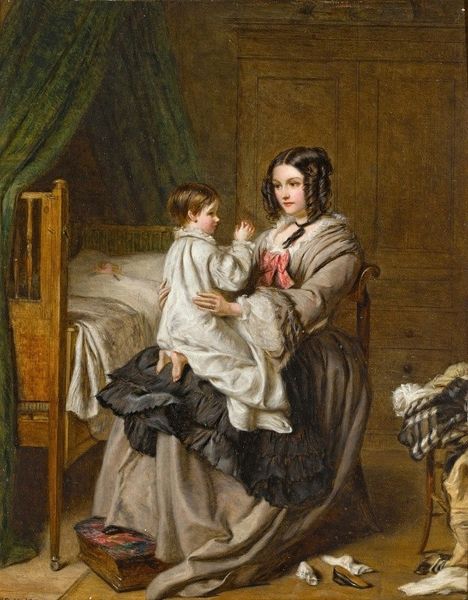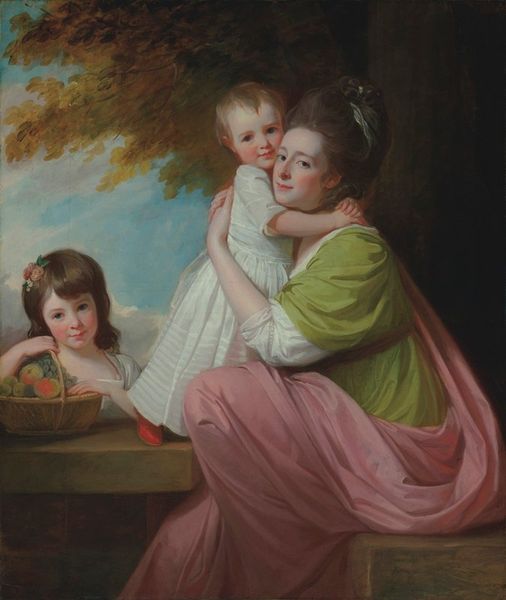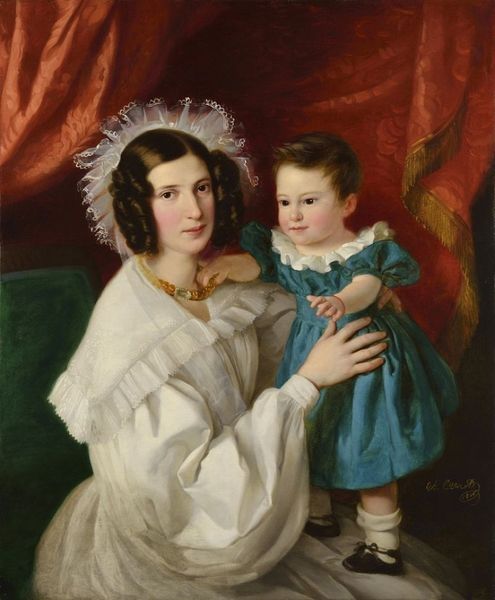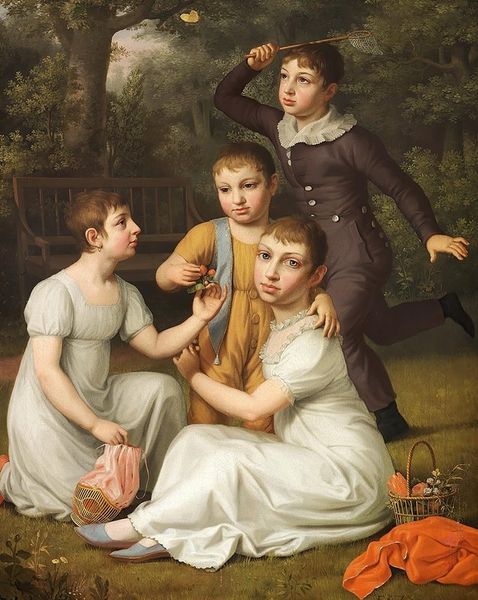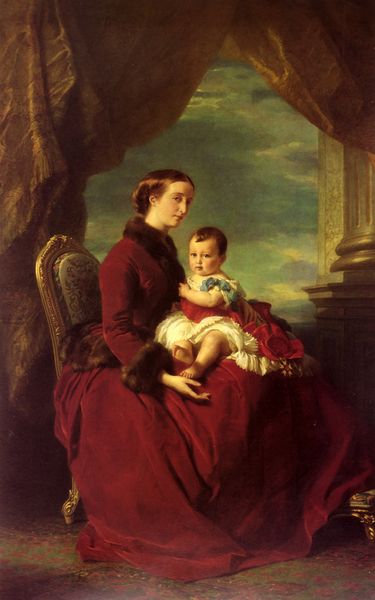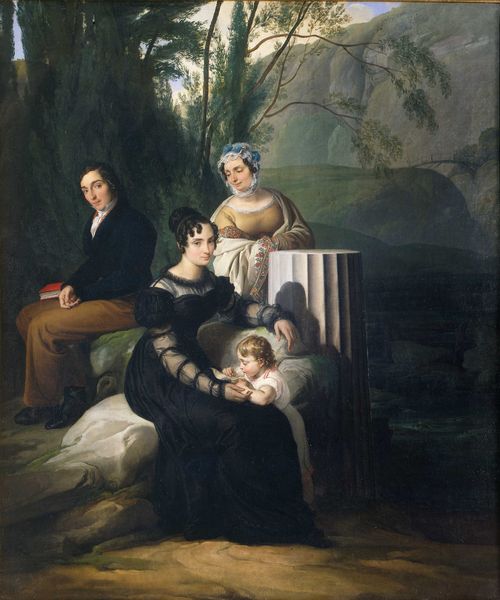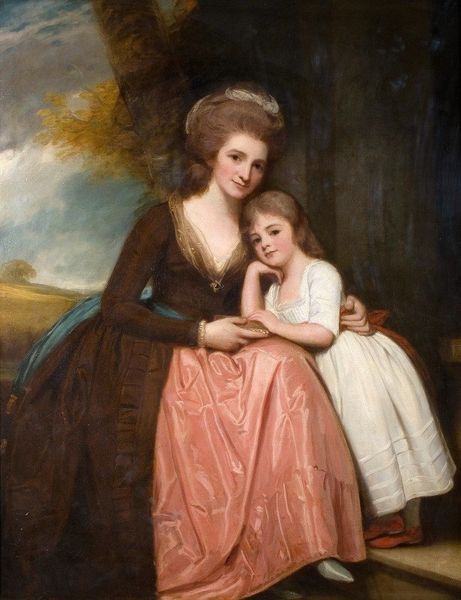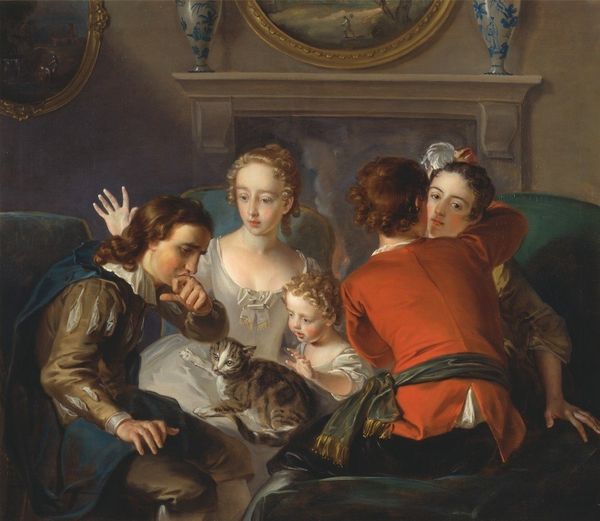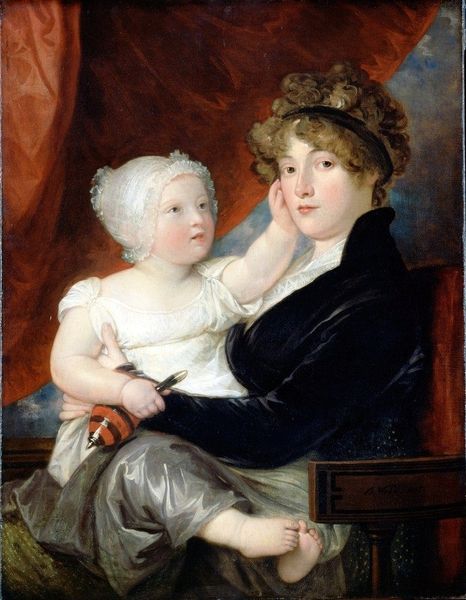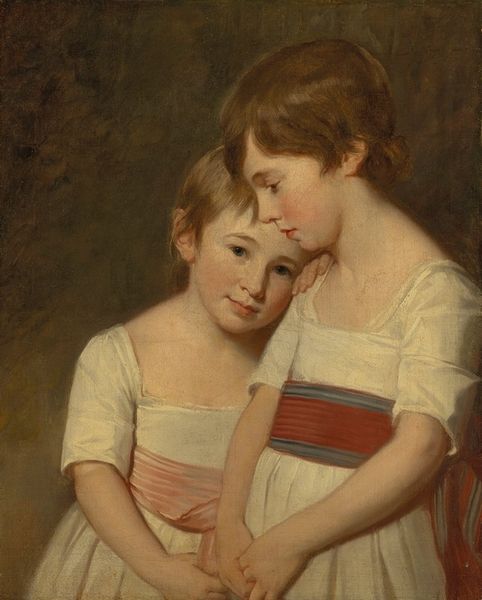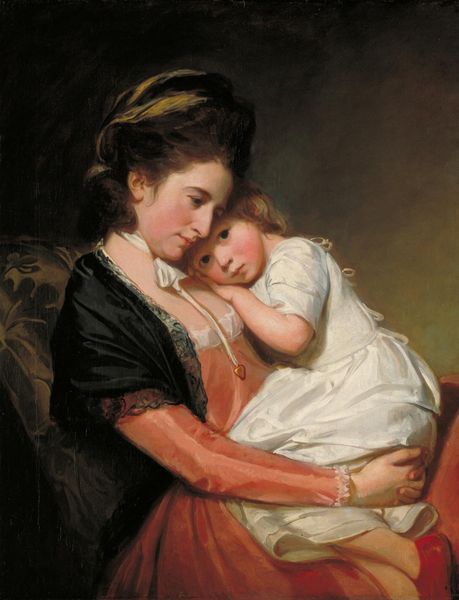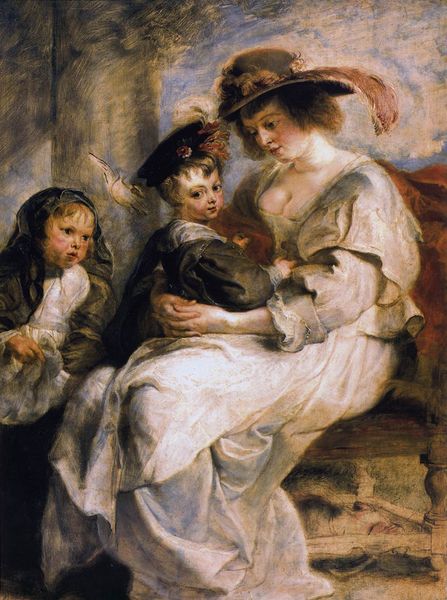
painting
#
portrait
#
painting
#
landscape
#
romanticism
#
genre-painting
Copyright: Public Domain: Artvee
Curator: Let’s turn our attention to “Mother and Son,” painted by Thomas Sully around 1840. We see a portrait of a woman resting her head on her hand next to her son, set against an expansive landscape backdrop. Editor: My immediate response is drawn to the mother’s posture. Her pose suggests a thoughtful melancholy, almost as if she’s gazing into a future burdened with unanswered questions. Curator: Precisely. The formal structure echoes classical portraiture, note the pyramidal composition stabilizing the figures. However, Sully subtly employs Romantic ideals; see the delicate, emotive use of light to create this atmospheric perspective. Editor: While the brushwork renders these figures within established painterly codes, I’m more struck by the costuming. What sort of fabric and labour went into those draping gowns, to emphasize that fall, that gathering of wealth upon the figure of the mother? Curator: The fabric indeed becomes a signifier. The luxurious textures, juxtaposed against the rugged landscape, offer a play of oppositions. The silky dress creates contrast between wealth and nature, placing the family in a cultivated pastoral ideal. Editor: It also draws out some stark realities. It's an ideal achievable for whom? What material dependencies underpin that carefully arranged image? Curator: An incisive point. The artwork, considered through a materialist lens, questions such accessibility. Sully employs the medium of oil to reinforce distinctions, rendering material comforts highly desirable and decidedly distinct from labor or production. The very act of painting with precious pigments echoes material realities. Editor: Agreed, a material examination unveils that such Romantic landscapes depend heavily on obscured labour dynamics. This isn’t only a representation; it’s evidence of production. Curator: Well observed. It appears that by analysing these paintings through differing methodologies, we unearth complex insights into society, labour and form itself. Editor: Yes. Analyzing the materiality as well as the formalism gives the work an expanded significance, which brings the painting alive.
Comments
No comments
Be the first to comment and join the conversation on the ultimate creative platform.
